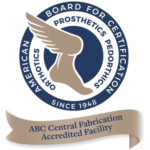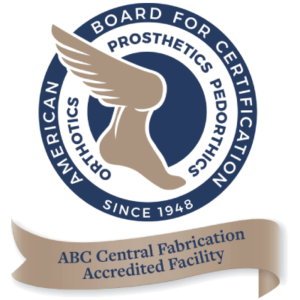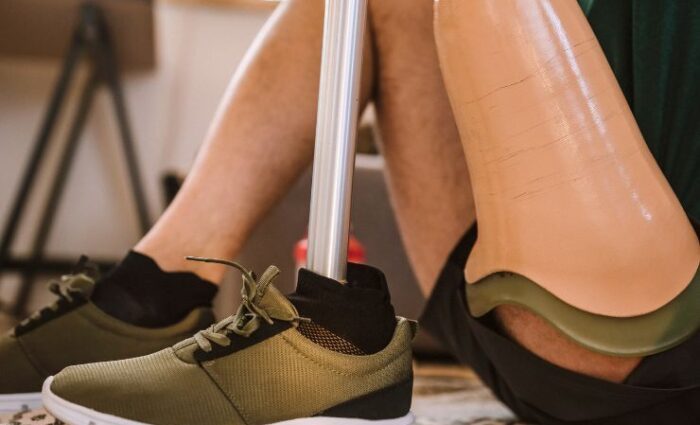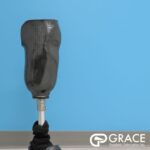How to help your patients solve common issues with prosthetic leg sockets.
Prosthetic leg socket problems are highly individual, yet solvable with a patient-centered and team-based approach. Understanding common problems like volume fluctuations, skin irritation, and ill-fitting sockets helps clinicians improve outcomes. Proactive socket design, adjustable technologies, and custom fabrication can dramatically transform a patient’s mobility and comfort.
Prosthetic leg socket problems can significantly affect a patient’s comfort, mobility, and quality of life. Despite advances in custom prosthetic leg socket designs, many individuals still face common issues related to socket fit, skin breakdown, or residual limb discomfort. These challenges are not just frustrating for the prosthetic user—they also present ongoing clinical concerns for healthcare providers. By understanding the root causes and solutions to these problems, doctors and specialists can help patients overcome obstacles in their rehabilitation journey.
In this comprehensive guide, we’ll explore the most common prosthetic leg socket problems, detailing causes, solutions, and how multidisciplinary teams can guide patients toward long-term success with their prosthesis.
Table of Contents
- Understanding Prosthetic Leg Socket Problems
- Why Do Patients Experience Socket Fit Issues?
- Key Signs of an Ill-Fitting Socket
- Common Prosthetic Socket Problems and Their Solutions
- A. Skin Breakdown and Irritation
- B. Volume Fluctuations in the Residual Limb
- C. Weight-Bearing and Posterior Pressure Points
- D. Suspension System Failures
- E. Misalignment or Poor Socket Design
- Role of Prosthetic Socks and Liners
- Importance of Custom Prosthetic Socket Fabrication
- Using Adjustable Sockets and Test Sockets
- How Rehabilitation Teams Improve Outcomes
- Quick Summary
- Frequently Asked Questions
- Conclusion
Understanding Prosthetic Leg Socket Problems
The success of a prosthetic leg depends heavily on how well the custom socket fits the residual limb. A mismatched or ill-fitting socket can cause pain, limit mobility, and jeopardize the patient’s willingness to use the prosthesis. Common issues like skin irritation, volume fluctuations, and misalignment can severely undermine the effectiveness of even the most advanced prosthetic limbs.
The goal for doctors, prosthetists, and rehabilitation specialists is to recognize early signs of socket problems and intervene with evidence-based solutions tailored to the patient’s needs and anatomy.
Why Do Patients Experience Socket Fit Issues?
Prosthetic socket problems arise from a complex interaction between the socket design, the patient’s soft tissue volume, skin condition, and overall activity level. Factors that contribute to socket problems include:
- Changes in limb volume due to weight loss or gain
- Improper alignment or socket fabrication errors
- Faulty suspension systems
- Skin breakdown due to friction or pressure
- Poor communication between patient and the rehabilitation team
Knee amputees especially encounter complications due to the dynamic forces experienced while walking or moving. Without appropriate socket adjustments, pain and instability may worsen over time.
Key Signs of an Ill-Fitting Socket
Recognizing an ill-fitting socket early is vital for immediate correction. Warning signs might include:
- Persistent or recurring skin irritation or breakdown
- Pain at the distal end of the residual limb
- Pistoning or excessive movement within the socket
- Difficulty putting on the prosthesis
- Decrease in mobility or unwillingness to wear the prosthetic leg
Each of these symptoms warrants a re-evaluation of both the socket design and the patient’s prosthetic components.
Common Prosthetic Socket Problems and Their Solutions
Skin Breakdown and Irritation
Skin issues are among the most reported prosthetic leg socket problems. These can stem from pressure points, friction, heat buildup, or improper liner use.
Solutions:
- Use moisture-wicking prosthetic liners tailored to the patient’s limb shape
- Adjust socket trim lines that come in contact with sensitive skin
- Implement padding or modify the inner socket texture to reduce shearing
- In severe cases, re-casting may be necessary to fabricate a more compatible custom prosthetic socket
Volume Fluctuations in the Residual Limb
Daily or seasonal changes in residual limb volume affect socket fit and comfort.
Recommended interventions:
- Educate patients on proper use of prosthetic socks to manage volume changes
- Provide adjustable sockets for patients with highly variable limb sizes
- Maintain regular follow-up visits to reassess fit and alignment
Weight-Bearing and Posterior Pressure Points
Overloading on one area of the residual limb can lead to painful pressure points and ulcers.
Effective mitigation includes:
- Reconfiguring weight distribution within the socket during the test socket phase
- Incorporating flexible inner materials to accommodate soft tissue
- Utilizing advanced socket design that mimics anatomical load-bearing structures
Suspension System Failures
Poor suspension reduces limb control and increases the likelihood of falls or gait irregularities.
Solutions can involve:
- Upgrading to more secure systems such as elevated vacuum suction or pin locks
- Re-evaluating the patient’s gait and activity level to match the suspension mechanism
- Ensuring all interfaces, including liners and sleeves, are intact and applied correctly
Misalignment or Poor Socket Design
Improper angles or socket misalignment often stem from suboptimal design during initial fabrication.
To correct this:
- Use test sockets for active trials before committing to permanent fabrication
- Involve both clinicians and prosthesis users in the socket evaluation process
- Invest in custom prosthetic leg socket designs that suit the patient’s functional and anatomical needs
Role of Prosthetic Socks and Liners
Prosthetic socks and liners are pivotal in achieving a comfortable but fitted socket. These components serve as volume adjusters and pressure dispersers and help prevent direct skin contact that could cause irritation.
Key considerations:
- Educate patients on layering techniques using different sock ply (thickness)
- Replace worn-out socks and liners regularly to ensure optimal performance
- Implement thick liners or gel-style options for patients with hypersensitive skin
Importance of Custom Prosthetic Socket Fabrication
Every residual limb is different. Generic sockets do not meet the unique anatomical and functional needs of most patients. Custom prosthetic socket fabrication takes into account limb length, soft tissue composition, daily activity levels, and cosmetic preferences.
Benefits of custom leg sockets include:
- Improved fit and suspension
- Enhanced patient satisfaction and wear time
- Reduced likelihood of pressure sores or skin breakdown
- Better gait symmetry and overall mobility
Using Adjustable Sockets and Test Sockets
Adjustable sockets and test sockets are crucial tools in creating well-fitted final prosthetics. They allow specialists to make real-time modifications based on patient feedback, pressure mapping, and gait trials.
Clinical best practices:
- Conduct multiple test socket trials during the initial stages of prosthetic fitting
- Use adjustable sockets for patients with ongoing residual limb fluctuations
- Integrate patient-centered design iterations before final socket fabrication
How Rehabilitation Teams Improve Outcomes
A multidisciplinary rehabilitation team should include prosthetists, physiatrists, physical therapists, and nurses who collaborate regularly.
Key roles include:
- Tracking patient progress and adjustment needs
- Identifying early signs of skin issues or gait imbalance
- Providing targeted physical therapy to reduce stump shrinkage
- Offering psychological support for prolonged adjustment periods
Frequently Asked Questions
How often should a prosthetic socket be replaced?
A prosthetic socket should typically be evaluated every 12–18 months or sooner if the patient experiences discomfort, instability, or skin irritation.
Can volume fluctuations normalize over time?
Yes, many patients experience a stabilization of residual limb volume about 6–12 months post-amputation, but daily fluctuations may persist.
How can I tell if my patient’s liner is worn out?
Signs of a worn prosthetic liner include cracking, loss of elasticity, persistent odor, and increased skin irritation despite proper hygiene.
What’s the difference between a test socket and a final socket?
A test socket is a temporary, transparent socket used for fitting assessments and modifications before fabricating the final, durable prosthetic socket.
Are adjustable sockets a permanent solution?
Adjustable sockets are often used as intermediate solutions or for patients with ongoing volume fluctuations, though some designs are becoming suitable for long-term use.
Contact Grace Prosthetic Fabrication for Custom prosthetic Leg Socket Design and Fabrication
Prosthetic leg socket problems remain one of the most critical challenges for lower-limb amputees, with implications for functionality, mental health, and overall recovery. Healthcare providers must proactively address these issues using a collaborative approach and focus on personalized socket solutions.
For providers seeking customizable, patient-focused solutions, Grace Prosthetic Fabrication. Our team has decades of combined experience designing and creating custom prosthetic leg sockets for patients.
Contact us today for a free consultation to learn more about our process and prosthetic sockets.






